Grand Escapades’ Travel Guide To Ladakh – Many Highlights Without Trekking
Itinerary And Time Of The Visit
If you are looking for information on trekking Ladakh, stop right here! You won’t find any. The day we arrived we decided against it – too hot, no shade, too expensive… Given these conditions, our already measly motivation made a trek never happen.
Our three-week trip in July & August 2013 started in Amritsar / Punjab, where we explored the amazing Golden Temple. An equal amount of time – three days – we spent in Srinagar / Kashmir. It’s the lake and the breathtaking scenario surrounding it you come for. Of course we stayed on a houseboat.
The trip Delhi – Amritsar – Srinagar we covered by plane. From Srinagar to Leh, the capital of Ladakh, we traveled by jeep. We used Leh as a hub for traveling to the Nubra Valley & Baltistan, the lakes of Tso Moriri & Tso Kar and the monasteries of Lamayuru, Likir, Alchi, Hemis and Thiksey. Be aware that visiting too many monasteries in a row can get you easily overdosed – It would be a shame to lose interest in these magnificent places of ancient Ladakhi culture.
Why Travel To Ladakh?
Do not be mistaken! Ladakh is no longer a well-kept secret. Leh, the capital, is a congested and noisy mess, in the summer months anyway. First of all, the season is very short, so most tourists arrive within two months. Besides, there is no way of avoiding this city – to organize trips, get permits and find travel companions. It is almost a must to come here, unless you have your journey completely organized beforehand (which is definitely not necessary). This, we hardly ever do to allow for maximum flexibility.
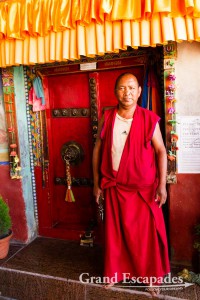
Monk in front of the door, Diskit Monastery or Diskit Gompa, Shyok Valley, Baltistan, Ladakh, Jammu & Kashmnir, India
So why is Ladakh so attractive for tourists? It’s a mélange of mystical, ancient monasteries, of breathtaking landscapes and remote, untouched villages like Bodgang in Baltistan. The main outdoor attraction is trekking, anything from 1 to 23 day treks. But also rafting on the Zanskar River is popular. During the winter months, you can trek on this very river in icy temperatures. Ladakh has also become increasing popular for motor-bikers, usually small groups – some of them very inexperienced. Climbing a windy mountain road up to 5.600 meters must mean a lot to many men (we only saw male bikers). We passed quite a few women on bicycles, though. And there are highlights for the “been there, done that crowd”, like passing the highest motorable road on earth, at 5.602 meters.
The vast majority of tourists in Ladakh are middle class Indian families, who can afford a holiday to the Himalayas. For them, the many foreign tourists are an additional attraction: they love to have their photo taking with them.
Challenges Organizing The Trip – What Would We Have Wished To Know?
How easy is it to travel?
Ladakh is very easy to travel – Touristic infrastructure is well developed. Roads are improving fast and are now mostly in good to excellent conditions, especially considering you are driving on top of the world and often what seems the end of the world. Leh has every kind of accommodation you could dream of, from 5* deluxe hotels to places where you pay a couple of Euros. About 100 travel agencies are competing for your business. Even remote places like Turtuk have acceptable guesthouses. Food can get very, very monotonous – rice and dhal – in rural area, though.
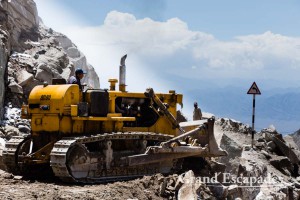
Road construction requires to blast some rocks from the mountain slope right at the pass – Here at Khardung La, we stayed 3 hours blocked at 5.602 meters – Ladakh, India
Traveling? Of course renting a jeep is the most convenient way, which we did. But we always shared with a couple of fellow travelers (travel agencies are helpful in arranging this). Do not rule out public transport altogether. It is doable, but very time consuming.
What’s not sooo easy to deal with is the altitude, at least not for everybody. Knowing this, we slowly worked our way up through Punjab and Kashmir and when we arrived in Leh, we felt so great and full of energy that on our second day we set off on a motor-bike, exploring nearby monasteries. Well, the result of this foolishness was Gilles spending the next afternoon in the hospital. True, the hospital visit itself was an experience! Heidi on the other hand could not sleep, lost all her appetite (yeah!) and had a light, but permanent headache. Our advice, even if you are itchy to check out the place: do nothing but walk around, read, drink lots of water and check out a few travel agencies for the first couple of days.
Trekking or not trekking, that is (in our opinion) not the question…
For many visitors, Ladakh is synonymous with trekking. We did not trek a single day! Initially we had intended to do a short 2-3 day trek, but once we there, we could not really understand why anybody would do so in July and August. In this altitude desert, without any vegetation, no shade protects you from the scorching sun. Temperatures are high during the day (up to 35 degrees Celsius) and nights can be freezing, at least in higher places. This sounds negative? Many people we met loved the trekking. But for us walking a small hill meant puffing and huffing, so climbing up a pass at 5.000+ meters was beyond our imagination…
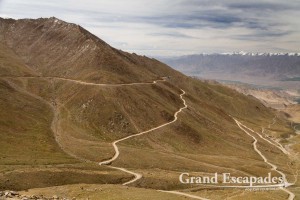
Road from Leh to Khardung La, the highest motorable road in the world at 5.602 meters, Ladakh, India
Motor-biking Ladakh?
Who has not dreamt of riding a Royal Enfield on the highest road in the world? Lots of people do, and so you see plenty of bikers, mostly in small groups, winding their way up and down these mountains. And believe it or not, a lot of them are beginners… The challenge of riding a windy, maybe gravel mountain road is one thing, but at 5.600 meters, it is a completely different story: the altitude can play all kinds of tricks on your body!
Three ways to reach Ladakh – Which one to choose?
- If you choose flying directly into Leh, book your flights months ahead! And be prepared to gasp for air: this takes you straight to 3.500 meters, with all the side effects…
- Travel overland via Srinagar is, in our opinion, by far the best option. Many tourists are scared off by the troubled political history of Kashmir and the on and off unrests. We happened to arrive when Kashmir was again in the media because of clashes between Indian police and protestors. Once there, we did not notice anything. The locals often learn from tourists that there was some unrest in a village. The road Srinagar – Leh is in very good shape, much better than the one coming from Manali, we were told.
- Travel through Manali – we did not – but of what we heard from other travelers, it is a very long, strenuous 3 to 4 day journey from Delhi. Most people get sick on the trip from Manali to Leh, because many drivers insist on making an overnight stop at the now famous “Vomit Hilton” at 4.600 meters…
Highlights Of The Trip
- Crossing Khardung La: a pass at 5.602 meters on the way to the Nubra Valley. Crossing this pass you travel the highest motorable road in the world. Do you need another incentive? The landscape going up to the pass and especially down into the Nubra Valley is truly spectacular.
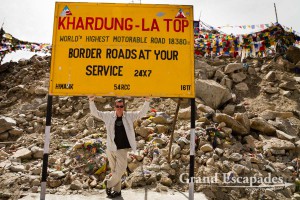
Khardung La, the highest motorable road in the world, at 5.602 meters, on the way to the Nubra Valley from Leh, Ladakh, India
- Tso Kar and Tso Moriri: the journey itself is worth the trip: the spectacular rock formations in the Puga Valley; get a glimpse of the lives of nomads; Tso Moriri’s stunning landscape – all unforgettable. We recommend starting with Tso Kar and then continue to Tso Moriri!
- A night in Lamayuru at the Lion’s Den Guesthouse: From our room we watched the sun set over the “Moonland” and on Lamayuru Monastery. The evening we spent with the whole family in the large living room / kitchen.
- Discovering the village of Bodgang on the way to Turtuk: the local Balti people were thrilled to meet us who climbed up the hill to find this truly untouched environment. Being invited to the Middle School topped it off. We truly hope the school got the photos we sent.
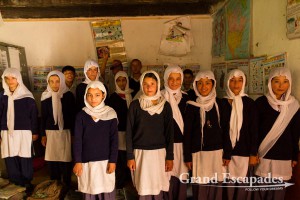
Visiting the middle school in Bodgang, a still rather untouched village above the road on the way to Turtuk, Shyok Valley, Baltistan, India
- Crisscrossing Lake Dal in Srinagar / Kashmir on a Shikara (small rowing boat) and visiting the floating vegetable market at 05:00 am.
- Last but not least – Amritsar, which actually was our first stop before heading to Srinagar – The Golden Temple: it is one of the most stunning places on this globe and definitely the most spiritual holy place we have experienced in India. And the Sikhs are such friendly people! The other must-see is the flag ceremony at the nearby he Wagah Border with Pakistan.
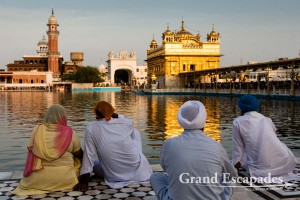
Sikh Pilgrims in front of the Harmandir Sahib (Punjabi: ਹਰਿਮੰਦਰ ਸਾਹਿਬ) or Darbar Sahib, also referred to as the “Golden Temple”, a prominent Sikh Gurdwara or Sikh temple, Amritsar, Punjab, India
How To Go Off The Beaten Track?
- Ladakh, and especially Leh, are no longer a well-kept secret.
- Going Off The Beaten Track means to reach more remote areas, like Tso Kar & Turtuk. For the latter, you need either a jeep or enough time to do so on public transport.
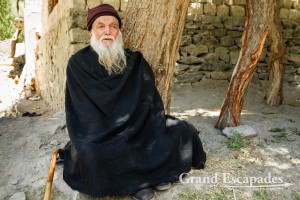
Balti old man in Bodgang, a still rather untouched village above the road on the way to Turtuk, Shyok Valley, Baltistan, India
- Zanskar seem to be less touristy than Ladakh, but we haven’t been there though.
What Will We Especially Remember?
- Having horrid memories of cold nights on the Andean Altiplano, we expected similar sufferings. But what we remember most about Ladakh’s climate was the incredible heat during the day, with temperatures climbing up to 35 degrees Celsius / 95 degrees Fahrenheit. A scorching sun without any shade in a high altitude desert without any vegetation. True, nights in Tso Kar & Tso Moriri were cold, not a surprise at 4.500 meters…
- Patches of green in the otherwise bare valleys struck us. It was apricot season – street vendors sell these small, juice apricots for less than one Euro per kilo. What a change to our dal, rice and chapatti diet!
- The center of Leh – a noisy congested mess during July & August. We don’t know how it looks like the rest of the year but what we remember are hundreds of souvenir shops, more than hundred travel agencies and restaurants offering all kinds of food. Once we turned off the main drag, life is very different, real, with tailors, bakeries and small groceries.
- Restaurants in Leh specialize in Korean – Israeli – Russian – Italian – Chinese – Indian – Tibetan – Continental food… All in one place, no kidding! But don’t worry, it all tastes like Indian food…
- Road constructions are omnipresent in Ladakh, with people from the province of Bihar slaving away under terrible conditions, buildings roads, often with their bare hands for three Euro a day, living in tents engulfed in dust at 4.500 meters.
- Dal, Rice and Chapatti / Chapatti, Dal and Rice / Rice, Dal & Chapatti. Once outside the main tourist drags, this is all you get. Oh, let’s not forget Maggie instant noddle soup…
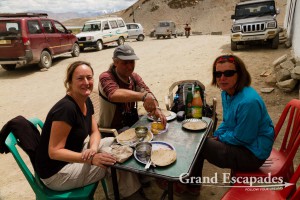
Lunch in Korzok, near Tso Moriri – Good, that Anne and Yann had bought a cheese, a welcome change from Dal & Rice – Ladakh, India
What Would We Do Differently?
- Have a closer look at the dates of Festivals… These dates vary each year, so do not take the dates of the previous year as a reference, as we did! We did not see any of them…
- Take it easy on the first few days in Leh: sit, relax, have a cup of tea, read a book. Do nothing! This is serious…
- Stop at the Monastery of Lamayuru when arriving from Srinagar, instead of continuing all the way to Leh. It shortens the trip and above all you don’t have to travel back from Leh to visit this famous monastery. You don’t have your own transport? No sweat! There are frequent public busses from Lamayuru to Leh.
- If we had been really experienced motorbiker, we would have loved to discover Ladakh on a Royal Enfield. The challenge, as we experienced it, was the less the windy roads but the altitude! But we aren’t…
Is It Safe To Travel To Ladakh?
Ladakh is extremely safe to travel. Do not underestimate the altitude though, and take it easy on the first 2 to 3 days.
We would not recommend venturing up a high mountain pass on a motorbike unless you are really experienced!
Best Time To Visit Ladakh
True, some trekkers go to Zanskar in Mid-February to trek on the frozen river… But we simply cannot understand the fun of being a fortnight outside by -20 to -30 degrees Celsius!
Due to the altitude, the season is limited to the few summer months. July and August are very crowed, at least in Leh. IIf you can, Mai & June are the best opportunity, as mountains are still snow-capped, which makes the landscape even more spectacular, and temperatures during the day are not as high as in mid-summer. Especially Trekkers should look at this time of the year.
Last but not least, you should look closely at the time of the various festivals. These dates vary each year, so do not take the dates of the previous year as a reference, as we did!
Communication (Language Barrier?)
Communication is extremely easy in Ladakh, with English widely spoken, even in remote areas.
Getting Around In Ladakh
This is definitely one of the main challenges, especially if you are on a budget. Obviously you can cover everything on Public Transport, but this is time consuming and sometimes not very comfortable. You might even end up on the roof of the bus, as experienced our friends Anne & Yann. Some place, like Tso Moriri seems to be particularily out of reach on public transport…
Travel Agencies are efficient at helping you finding fellow travelers to cut costs when renting a Jeep for a tour.
Red Tape
For many areas of Ladakh, you need a permit, but local agencies in Leh are very efficient at providing them. This process takes one or max. two days, the time you need to adjust to altitude anyway.
Photography in Ladakh: Rewarding & Challenging
In Ladakh, you will permanently be confronted with either too much light, or… not enough. Too much due to the strength of the sun in the high altitude desert, and not enough in every monastery!
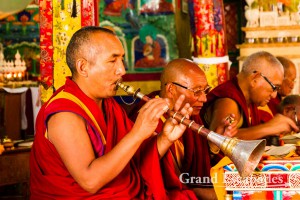
Domchot at Likir Monastery or Likir Gompa, with monks singing all day long, Ladakh, Jammu & Kashmnir, India
- Key Factors For Taking Great Pictures?
- Polarization Filters – You should use one pretty much all the time when photographing landscapes in Ladakh, to enhance contrasts
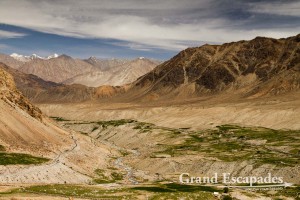
Ladakh is a high altitude desert, with once in a while small ribbons of green run down a slope, nourished by small stream running – Here Gangla Village, on the way from Leh to Khardung La, Ladakh, India
- High ISO – Photographing inside Monasteries is challenging due to the lack of light, and of course the fact that you cannot use flashes. A full-frame camera enabling you to use high ISO will be of much help
- Maximum Aperture – Lenses with high maximum Aperture (f2.8 or ideally higher) will be of great help to tackle the lack of light.
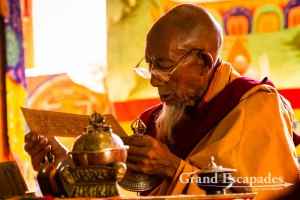
Domchot at Likir Monastery or Likir Gompa, with monks singing all day long, Ladakh, Jammu & Kashmnir, India
- Tripod – Some monasteries (not all) allow the use of tripods. This you should really consider, if you want to have good pictures inside monasteries
- Wide Angle & Tele-Lens – You will need both Wide Angle for monasteries and a good Tele-Lens for wildlife.
- Best Opportunities For Great Pictures
Unfortunately we missed all the festivals – This is definitely a unique opportunity for photographers.
Best & Most Inspiring Travel Blogs For Ladakh
Coming Soon…
Conclusion About Ladakh
Ladakh is no longer Off The Beaten Track: it is popular both with Indian and international tourists. The center of Leh is an extremely busy tourist hub during the summer months. But once outside the capital, you will enjoy amazing Buddhist monasteries and breathtaking landscapes. You will meet very friendly and hospitable Ladakhi people in a still rather untouched environment and nobody leaves without passing the highest motorable road on earth at 5.602 meters…
For trekkers, we would strongly recommend avoiding the hot summer months, with temperatures above 35 degrees Celsius / 95 degrees Fahrenheit, and not a single place to hide from the scorching sun in this high altitude desert!

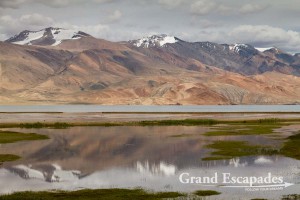
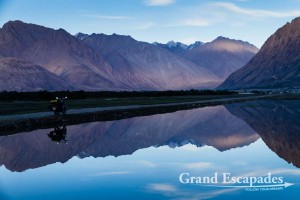
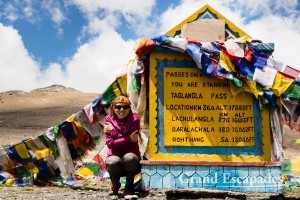
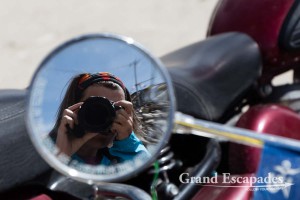
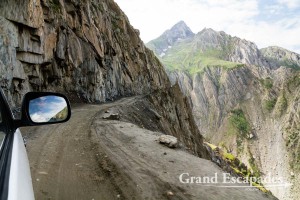
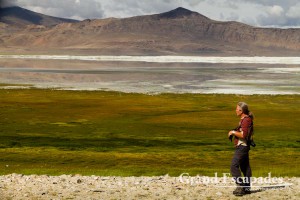
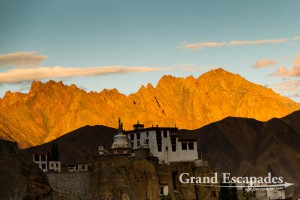
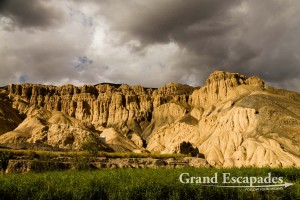
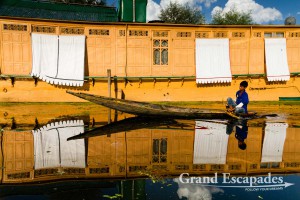
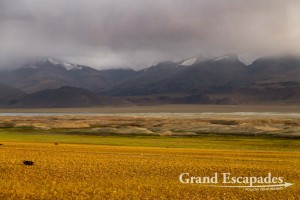

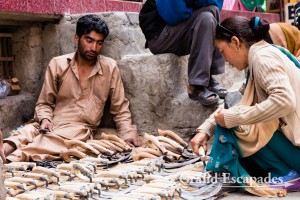
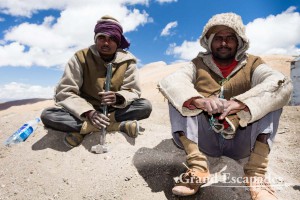
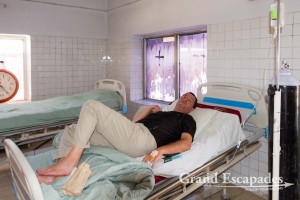
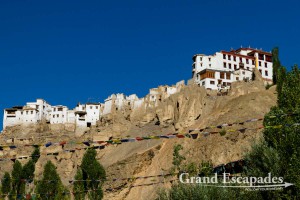
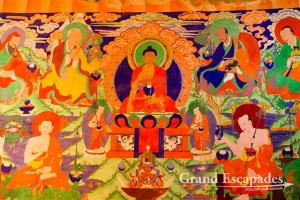
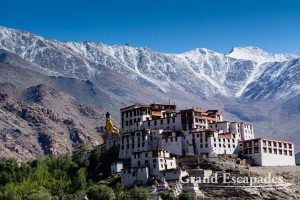
No comments yet.